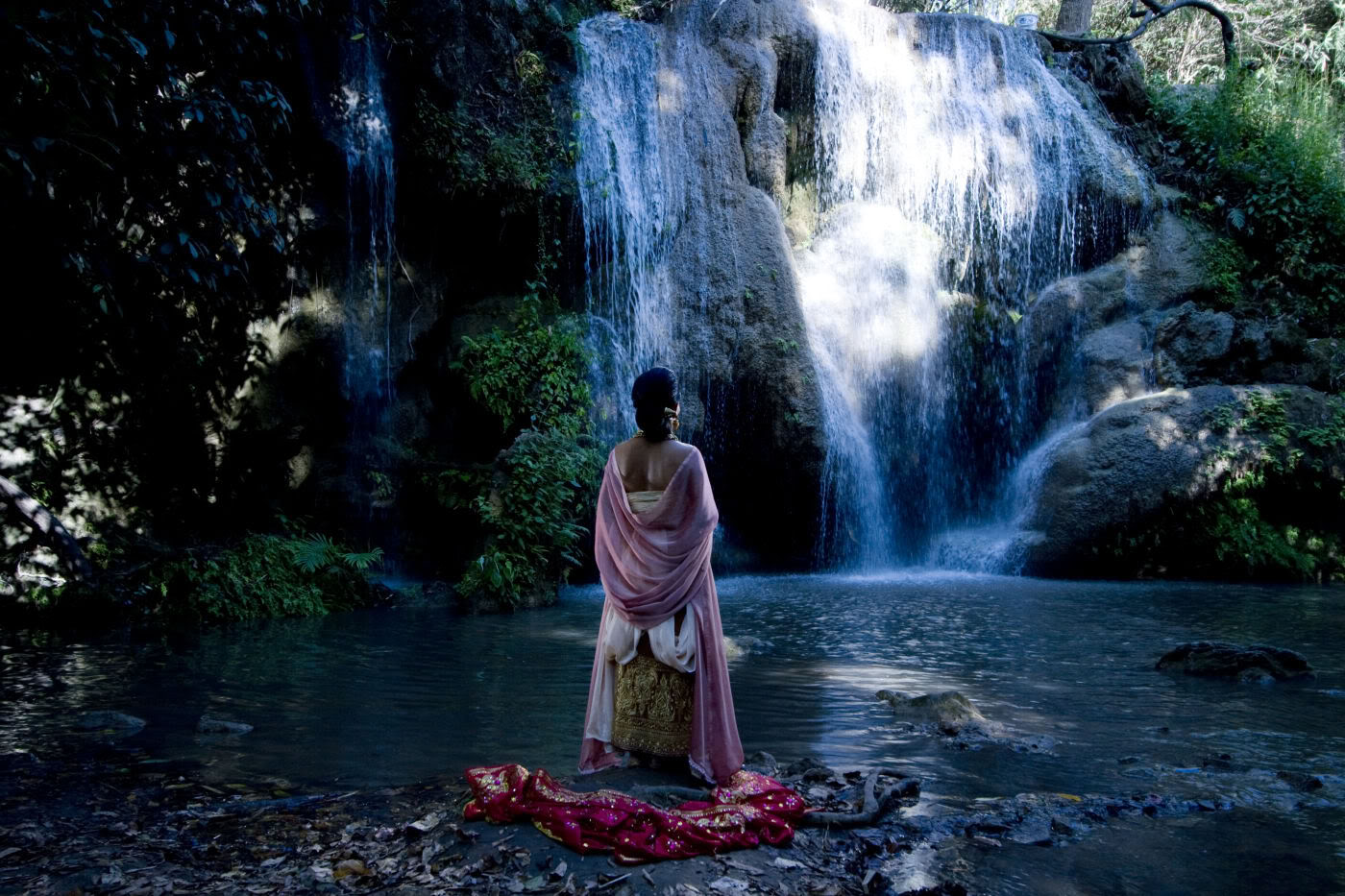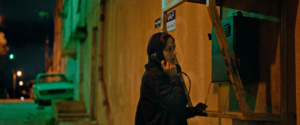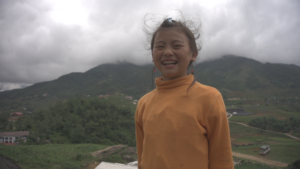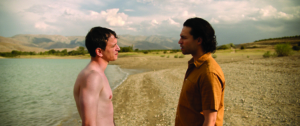In Headshot (2011), Pen-ek Ratanaruang’s self-described ‘Buddhist noir’ take on the revenge thriller, the hitman protagonist takes a bullet to the head. The trauma impairs his vision: thereafter, he sees the world, quite literally, upside down. It’s an obvious symbol for a changed world view, taking the action movie’s tale of righteous vengeance and making it a portrait of cautious virtue; the hitman’s self-destructive, railing-against-endemic-Thai-corruption-’til-death mission is a step on the path towards Buddhist enlightenment that won’t be answered in this life. ‘The upside-down vision as experienced by our protagonist’, says Ratanaruang, ‘can be interpreted as the inevitability of karmic retribution.’[1]Pen-ek Ratanaruang, quoted in Local Color Films, Headshot press kit, <http://international.memento-films.com/wp-content/uploads/2011/07/Headshot-presskit-FINAL-2012.pdf>, accessed 19 February 2013. This literally flipped way of looking at the world becomes a recurring visual motif, Ratanaruang periodically inserting woozy point-of-view shots that show an unrecognisable world.
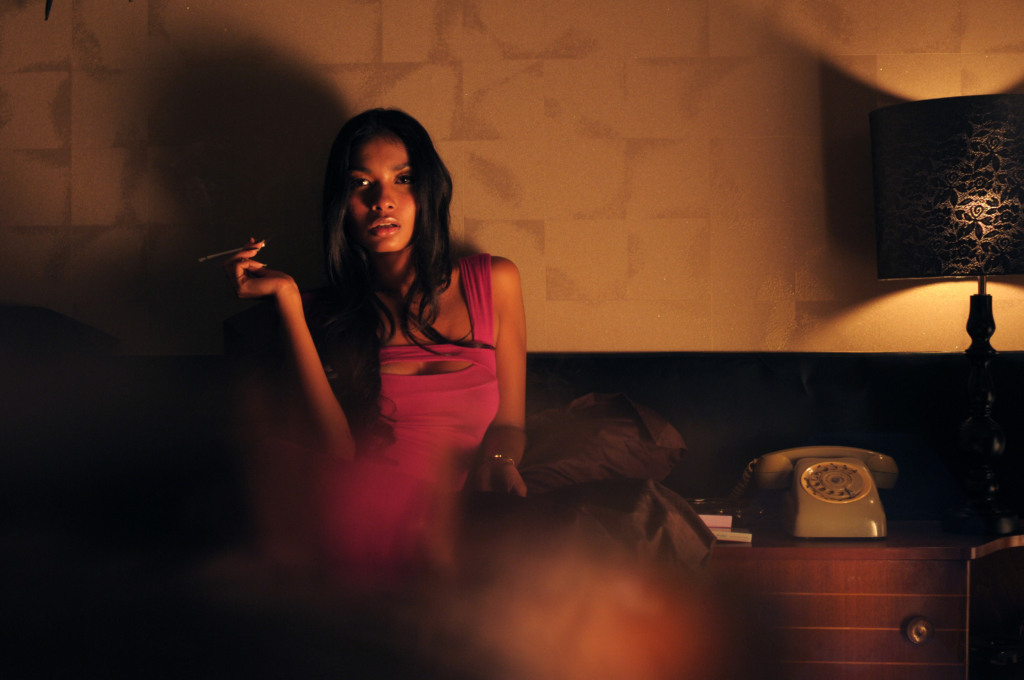
Knowing cinephiles may have almost expected the rest of the entire film to be shot upside down, as no national cinema – or, more specifically, its independent, auterist underground – has done as much in the twenty-first century to upend storytelling orthodoxy as Thai cinema. Ratanaruang is considered one of the more accessible figures of this Thai new wave: Monrak Transistor (2001) is an unabashed crowd-pleaser, and much of his filmography – Fun Bar Karaoke (1997), 6ixtynin9 (1999), Last Life in the Universe (2003), Invisible Waves (2006), Headshot – are features that, no matter how elliptical or symbolist, are essential variations on crime movies. While playing with genre forms can be its own challenge to story form, Ratanaruang has also created more disconcerting pieces of narrative confusion. In Ploy (2007), the filmmaker uses one stock cliché – that instant in which a quick cut reveals a character waking with a start, thereby revealing the preceding scene as a dream – over and over, to the point where the divide between the narrative ‘dream’ and ‘reality’ is obliterated; this is not some Inception-esque realm of dreams within dreams, but a very-contemporary-feeling place in which there’s no more ‘real’ to return to. Ploy was, as its punning title suggests, in many ways a cinematic parlour game, but it served as commentary on essentially ersatz modern times, and the alienated unreality of life in the modern metropolis. Ploy makes implicit what Ratanaruang would, in his next film, Nymph (2009), make explicit by sending a pair of unhappily married Bangkokians out into the jungle and face to face with ancient myths.
No national cinema has done as much in the twenty-first century to upend storytelling orthodoxy as Thai cinema.
Alighting into the jungle, Nymph is comparable to the work of the key figure in modern Thai independent cinema: Apichatpong Weerasethakul. Long acclaimed in world cinema circles, having won prizes at Cannes for both Blissfully Yours (2002) and Tropical Malady (2004), Weerasethakul had a ‘coming out’ of sorts in 2010 when he won the Palme d’Or – the Cannes Film Festival’s highest honour – for Uncle Boonmee Who Can Recall His Past Lives. Following this success, Weerasethakul has become the de facto global ambassador of radical Thai cinema. It’s an international narrative that runs counter to the official message dictated within the Thai Kingdom; Weerasethakul – or ‘Joe’, as he’s sometimes fondly called by foreign fans – has delivered a body of work whose sexual, ideological, political and anti-nationalist ideals run counter to the prevailing monarchical/military rule. Working outside of the Thai studio system, which is strictly controlled and censored (in Thailand, the royal anthem plays before every film screening, like at a sporting event), Weerasethakul’s films are rarely shown in his homeland. ‘I feel the powers of the two giant institutions – the army and the monarchy – blanketing the country,’ Weerasethakul writes of his forthcoming feature Cemetery of Kings, a chronicle of soldiers suffering sleeping sickness on the border between Thailand and Laos. ‘I write this film as a rumination on Thailand, where, like the soldiers in this film, we take refuge in daydreams.’[2]Apichatpong Weerasethakul, quoted in Hong Kong – Asia Film Financing Forum 2013, HAF 2013 Projects: Cemetery of Kings, pp. 48–9, <http://www.haf.org.hk/haf/pdf/project13/Cemetery%20of%20Kings.pdf>, accessed 19 February 2013.
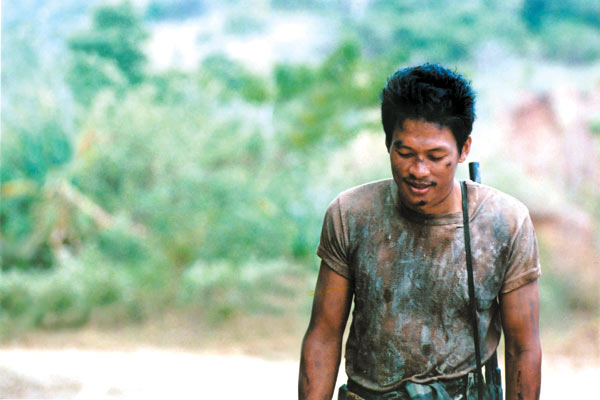
Weerasethakul films, stylistically, take place at the intersection between daydream and memory (‘I try to mimic the pattern of memory and of thinking and the randomness of life,’ Weerasethakul says[3]Sam Adams, ‘Interview: Apichatpong Weerasethakul’, AV Club, 3 March 2011, <https://www.avclub.com/apichatpong-weerasethakul-1798224451>, accessed 19 February 2013.), but they’re just as much pieces of cinematic formalism, assembled around instances of nonlinear, narrative dislocation, in which every edit can disrupt the story’s forward movement and every splice can suggest an alternate reality. As with Ratanaruang and Headshot, there’s a Buddhist influence: Uncle Boonmee Who Can Recall His Past Lives was inspired by the story of a monk in rural Thailand who claimed that, through meditation, he could see his past lives playing ‘like a movie’. Weerasethakul turns that into a cinematic gambit, echoing the way his debut, a no-budget black-and-white curio called Mysterious Object at Noon (2000), was an exquisite corpse stitched together from separate stories told by rural interviewees. With each new past life depicted – which change with the changing of each film reel – there is a stylistic switch, birthing not just the narrative, but the genre anew: Weerasethakul riffs on costume drama, B-movies, documentary and, finally, his own cinema. This makes for a study of personal memory as cinematic memory: the film is his first picture to be shot in Isan, in the northeast, where he spent time as a child, and its titular character is dying of kidney failure as Weerasethakul’s own father just had.
With its vignettes strung together along ideas of transmigration, Uncle Boonmee Who Can Recall His Past Lives made explicit a form of narrative reincarnation that Weerasethakul had long practised.
With its vignettes strung together along ideas of transmigration, Uncle Boonmee Who Can Recall His Past Lives made explicit a form of narrative reincarnation that Weerasethakul had long practised. The film was itself reincarnated: it began life as A Letter to Uncle Boonmee and Phantoms of Nabua – twin short films that obliquely chronicled life in Nabua, a distant rural town under army occupation for years; and Weerasethakul sees repressive rule and military intervention as being history endlessly repeating, where the struggles of the past are reincarnated in the present. Syndromes and a Century (2006) was built as a shrine to the filmmaker’s childhood memories (‘I tried to record many kinds of memories that would reference the space of my parents’[4]Lawrence Chua, ‘Apichatpong Weerasethakul’, BOMB, Issue 114, Winter 2011, <http://bombsite.com/issues/114/articles/4715>, accessed 19 February 2013.); its narrative is essentially a riff on the courtship of his parents, doctors who moved to rural Khon Kaen to work in a hospital. But Weerasethakul splits the film in half, telling the same story with the same actors and dialogue, twice over – in two different time-periods and settings. Blissfully Yours – a work exploring themes of suffering and attachment in Buddhism – sustains the one story, but feels stylistically halved. Infamously starting its opening credits forty-five minutes in as a symbolic halfway marker (when first I saw it, one confused patron left the cinema, seemingly believing these were the end credits), the film contrasts early scenes in town with later ones in the jungle; its exploration of sexual longing and cultural dissatisfaction starts out friendly and busy before settling in for stilled, silent minimalism.

Tropical Malady is another work of cinematic reincarnation. In the film, an urbane soldier and a rural cattlehand begin the hesitant, unsure flirtations of transgressive attraction and first love. Yet rural romance suddenly – via an abrupt ‘turning off’ of the camera and an unexpected mid-film title card – reincarnates into a piece of radical folklore, with its key actors recast in the story of a solider wandering through the jungle, growing disoriented as he’s taunted by a Khmer shaman taking the shape of a tiger. Though Tropical Malady’s Western title touched on Weerasethakul’s vision of the Thai military as a form of social disease, its local title, Sud Pralad, refers to a monster – a mutant offspring of two species. This is something that is reflected in the film’s essentially bisected narrative and, further, throughout Weerasethakul’s other pictures, which splice together tales of city and country, and past and present, and chronicle affairs between Thais and Laotians, Thais and Burmese, soldiers and civilians, men and men, tigers and monkeys, princesses and catfish, spirits and ghosts.
For all the recurring images that arise throughout Weerasethakul’s work – the Thai countryside, the unending chirp of cicadas, picnics by rivers, folktales, soldiers, monks, doctors and clinics, filmmakers, guitar players, karaoke, public aerobics classes, trips inside cars, immigration, explicit sex, the Mekong, air vents – none are as meaningful as those that feel sacred, and culturally specific: animism, transmigration, phantoms. ‘I would like to thank all the spirits and all the ghosts in Thailand who made it possible for me to be here,’ Weerasethakul said upon receiving his Palme d’Or, living up to jury head Tim Burton’s praise of the film as defying globalisation’s trends towards a ‘more Westernised, more Hollywood-ised’ world (and, indeed, range of stories).[5]Mark Brown, ‘Cannes Film Festival: Apichatpong Weerasethakul Wins Palme d’Or’, The Guardian, 23 May 2010, <http://www.guardian.co.uk/film/2010/may/23/cannes-film-festival-apichatpong-weerasethakul>, accessed 19 February 2013. The win didn’t just turn Weerasethakul into an ambassador for Thai cinema, but cemented him as a key figure of independent filmmaking in his home country.
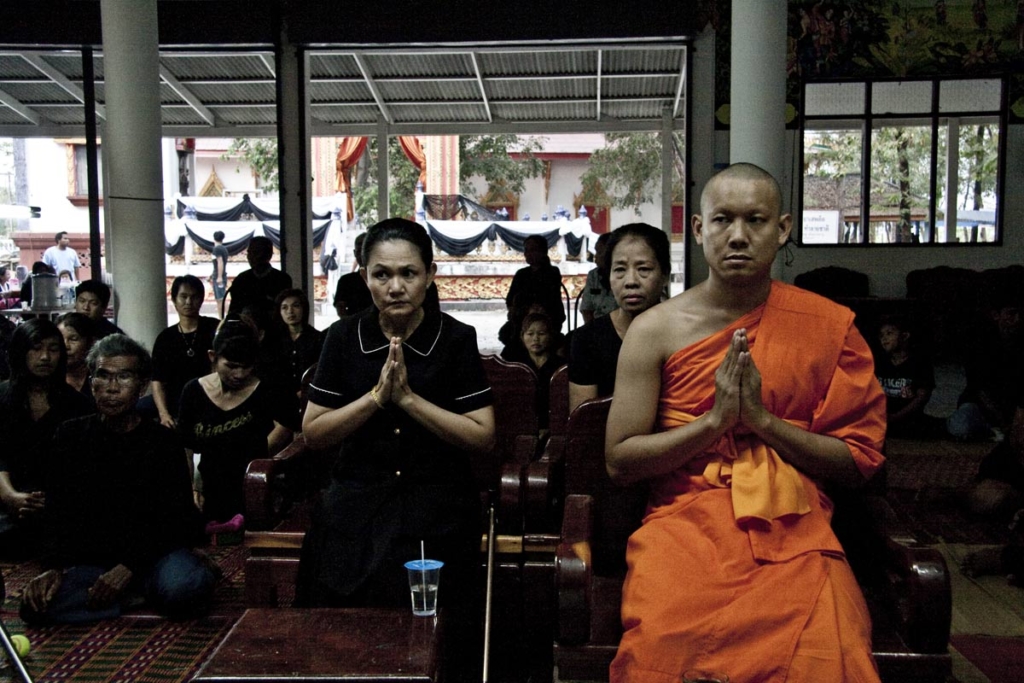
In Wichanon Somumjarn’s debut feature In April the Following Year, There Was a Fire (2012), the main character, a proxy for the director, is stopped on the street because there’s an ‘indie movie’ being filmed nearby. ‘What’s an indie movie?’ he asks. ‘Something like that Uncle Boonmee movie?’ The film runner shrugs that it’ll probably be seen only ‘in international film festivals’ – for this sort of film a local release in cinemas, even on DVD, is up to fate. In the final piece of meta commentary, the name of the film being shot is revealed: In April the Following Year, There Was a Fire. The game-playing persists as the film stages a story of a homecoming – its lead returns to Khon Kaen (also Somumjarn’s hometown) to idle away days with old friends in a forced retirement where they have no future to look forward to, ‘only old memories to talk about’ – which doubles as the director’s own. Furthermore, he cast his own father and brother, causing fiction and documentary to intersect.
Somumjarn describes In April as ‘a narrative that unfolds like a dream, where past and present collide’.[6]Wichanon Somumjarn, quoted in Electric Eel Films, In April the Following Year, There Was a Fire press kit, <http://www.pascaleramonda.com/wp-content/uploads/2012/04/In-April-the-following-Year-there-was-a-fire.pdf>, accessed 19 February 2013. This sentiment doesn’t just echo Weerasethakul, but the film’s own producer, Anocha Suwichakornpong, whose remarkable, dreamlike Mundane History (2009) mounts a multi-layered critique of Thai social castes and views on sexuality. For the most part, her debut feature is a dry, realist, rural drama about a new carer coming to work for a wealthy family, looking after their depressed paraplegic son. There is an upstairs/downstairs divide between master and servant that adds a symbolic charge to the underlaying sexual nature of their co-dependent relationship. Yet this story is anything but simply presented: Weerasethakul’s editor Lee Chatametikool makes his presence felt as he creates cutting rhythms that bring the shuffled chronology of the story to life as Suwichakornpong assaults a ‘straight’ narrative with flashes back and forward, not to mention fantastical flourishes of psychedelic daydreaming, where the wheelchair-bound boy pirouettes through imagined hallucinations of the cosmos. His love of astronomy brings with it a profound appreciation of the cycle of life – the birth and death of stars as relating to the birth and death of humans – and that, in turn, brings hope that he can rise above his own bitterness, his own anger, his own self-loathing. It all culminates with footage of a birth by caesarean that clearly wasn’t shot for the film (it’s either a home video or a medical video that’s been taken and repurposed); this, too, is another moment of reincarnation – the circle of life a cycle of constant rebirth.

Mundane History – as with Blissfully Yours – ran afoul of local censors for its full-frontal nudity. Both Suwichakornpong and Weerasethakul are active members of the Free Thai Cinema movement, a collective devoted to challenging the often-repressive nature of state-sanctioned filmmaking. These challenges come along political and sexual lines. Pimpaka Towira, the Free Thai Cinema movement’s chief short-film propagandist (who also starred in Weerasethakul’s 2004 short film Worldly Desires), opts for the explicitly political: her documentary, The Truth Be Told: The Cases Against Supinya Klangnarong (2007), chronicles the life of the Thai media activist and her legal fight against defamation lawsuits, and her eerie short film Terribly Happy (2010) – and its forthcoming feature-length iteration, The Island Funeral – studies the conflict between Islamic insurgents and local military in the Thai south. Thunska Pansittivorakul’s This Area is under Quarantine (2009) was denied release in Thailand due to its depiction of government forces cracking down on Muslim protestors, so he turned from the political to the sexual-as-political. His covertly filmed narrative feature Reincarnate (2010) was a provocative riposte – it opens with a title card that reads, ‘Thailand has, since August 2009, banned the screening of sexual acts and genitals in films, and anything that damages the interests of the country or causes disharmony in the people’ – that presented queer sex with warts-and-all realism, and featured a brilliant symbolic image: an unbroken ten-minute shot of a teetering Jenga tower embodying the relationship between teacher and pupil that was fated to eventually topple. Suwichakornpong staged a cuter, slyer social critique: her YouTube project Kissing in Public (2009) solicited citizens’ videos of couples engaged in the taboo-breaking act. Thanwarin Sukhaphisit’s Insects in the Backyard (2010) – a tale of teenage self-destruction that almost recalls Gregg Araki’s cinema of adolescent nihilism – became a local cause célèbre after being banned for its depiction of transgendered sex and male nudity, in response to which Sukhaphisit took out a lawsuit against the ratings board. And Aditya Assarat, Sivaroj Kongsakul and Pramote Sangsorn have come together for a three-director, three-segment sex omnibus entitled, with simple provocation, Nude Project (2013).
Assarat giddily toys with the popular perceptions of overseas visitors, and presents Bangkok as its own ‘playground’ rife with vice; the broken swings, where children are heard as ghostly voices, are to the city what the razed hotels are to the ‘serene’ coast.
Though Weerasethakul, the don of Thai independent cinema, has touched on the post-tsunami landscape in short films (2007’s Emerald, a portrait of a derelict Bangkok hotel, and 2005’s Ghost of Asia, an elusive evocation of lost spirits wandering the Thai coast in the wake of the 2004 Indian Ocean tsunami), it is Assarat who, thus far, must be considered cinema’s definitive chronicler of life on the ground in the devastated coastal areas. His debut feature, Wonderful Town (2007), was shot in the eerie ruins of Phang Nga province. Assarat staged a work of hypnotic minimalism equally entranced by the gentle lapping of waves and the gentle flirtations of a budding, by-the-seaside romance. Yet beneath the bittersweet minimalism, the picture bares some serious subtextual teeth, slowly turning into a savage social exorcism of post-tsunami Thailand, where Bangkok-based developers swoop in to rebuild ruined communities as profitable condos, and impoverished locals stew in feverish, inarticulate resentment. This divide – between big-city Bangkok, spared from the tsunami’s assault, and the coastal small towns that were washed off the map – is turned into a formalist exercise with Assarat’s second feature, Hi-so (2010). With obvious shades of Weerasethakul, the film is bisected into mirroring halves, and also draws from the filmmaking experience. In its first half, an actor (played by Thai-Australian beefcake Ananda Everingham) returns from America (where Assarat and Weerasethakul both went to study) to star as an amnesiac searching for memories he lost during the tsunami, walking through a ruined hotel and coming face to face with ghosts. He can’t get over feeling like a fraud, an interloper; his alienation from the experiences of those on the coast is symbolised by his American girlfriend, who he proceeds to dick around like only a country-hopping movie star can. The second half plays those scenes over as he, this time, shows little affection for a Thai girlfriend. The vacant drama’s second stanza takes place amid a collection of rich Thai kids and aimless expats, amounting to a sly satirical parody of high society (thus: Hi-so). The first half finds Everingham’s character unable to find truth in his role as an amnesiac searching for memories – scenes that are reflected, in the mirroring second half, when the actor, back in Bangkok where he grew up, looks for old landmarks from his childhood, and finds them lost, torn down, built over or in decay. Here, the landscape of the city is just as much a place for destruction and new construction as the tourist towns on the coast.
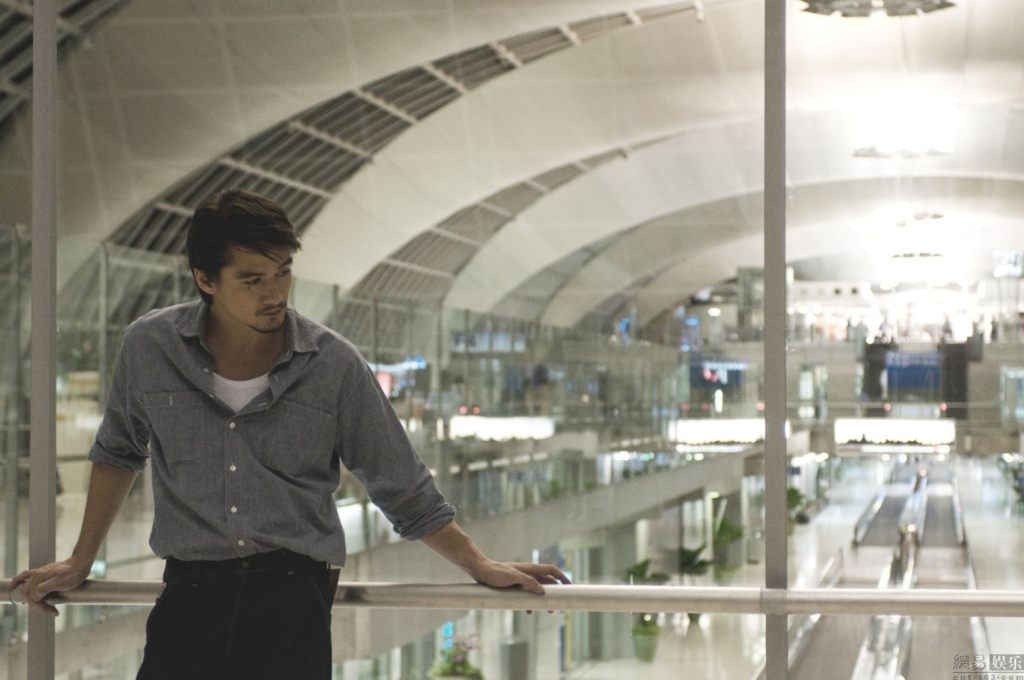
Assarat returns to this kind of ‘urban desolation’ amid another omnibus, Sawasdee Bangkok (2009). Modelled on productions such as New York, I Love You and Paris, je t’aime, it features four local filmmakers – Assarat, Ratanaruang, Wisit Sasanatieng (who achieved international acclaim with his adventures in wildly colourised genre, 2000’s Tears of the Black Tiger and 2006’s Citizen Dog) and Kongdej Jaturanrasamee – out to make a cheery comic portrait of the Thai metropolis. Ratanaruang and Sasanatieng summon short-film quirks, but Assarat laces his comedy with an aching sense of desolation, the film’s mixed-nationality expat buddy duo wandering through a series of crumbling buildings, dilapidated playgrounds and rundown bars as they attempt to ‘score’ with local women. Where the spectre of tourism dollars lingers uneasily in Wonderful Town and Hi-so, here it becomes explicit: Assarat giddily toys with the popular perceptions of overseas visitors, and presents Bangkok as its own ‘playground’ rife with vice; the broken swings, where children are heard as ghostly voices, are to the city what the razed hotels are to the ‘serene’ coast. Having studied in America and returned, Assarat gives the sense of an artist trying to look at Thailand with foreign eyes, and then comparing that vision with the reality perceived by locals. The Man with the Golden Gun (Guy Hamilton, 1974) made such use of the Phang Nga Bay that Khao Phing Kan, a pair of islands that are designated national parkland, became commonly called James Bond Island and grew into a popular tourist destination. In Wonderful Town, the two islands sit anonymously, as but lonely limestone rocks – figures unmoving in a landscape filled with change. They serve as a cinematic symbol both within the film’s narrative, and in a greater cultural sense. Where, for so long, Thailand has been seen as a colonialist paradise, ripe for the licentious adventures of wealthy Englishman, the rise of Thai independent cinema is presenting the world with an alternative – and, in many ways, completely radical – view.
Endnotes
| 1 | Pen-ek Ratanaruang, quoted in Local Color Films, Headshot press kit, <http://international.memento-films.com/wp-content/uploads/2011/07/Headshot-presskit-FINAL-2012.pdf>, accessed 19 February 2013. |
|---|---|
| 2 | Apichatpong Weerasethakul, quoted in Hong Kong – Asia Film Financing Forum 2013, HAF 2013 Projects: Cemetery of Kings, pp. 48–9, <http://www.haf.org.hk/haf/pdf/project13/Cemetery%20of%20Kings.pdf>, accessed 19 February 2013. |
| 3 | Sam Adams, ‘Interview: Apichatpong Weerasethakul’, AV Club, 3 March 2011, <https://www.avclub.com/apichatpong-weerasethakul-1798224451>, accessed 19 February 2013. |
| 4 | Lawrence Chua, ‘Apichatpong Weerasethakul’, BOMB, Issue 114, Winter 2011, <http://bombsite.com/issues/114/articles/4715>, accessed 19 February 2013. |
| 5 | Mark Brown, ‘Cannes Film Festival: Apichatpong Weerasethakul Wins Palme d’Or’, The Guardian, 23 May 2010, <http://www.guardian.co.uk/film/2010/may/23/cannes-film-festival-apichatpong-weerasethakul>, accessed 19 February 2013. |
| 6 | Wichanon Somumjarn, quoted in Electric Eel Films, In April the Following Year, There Was a Fire press kit, <http://www.pascaleramonda.com/wp-content/uploads/2012/04/In-April-the-following-Year-there-was-a-fire.pdf>, accessed 19 February 2013. |
